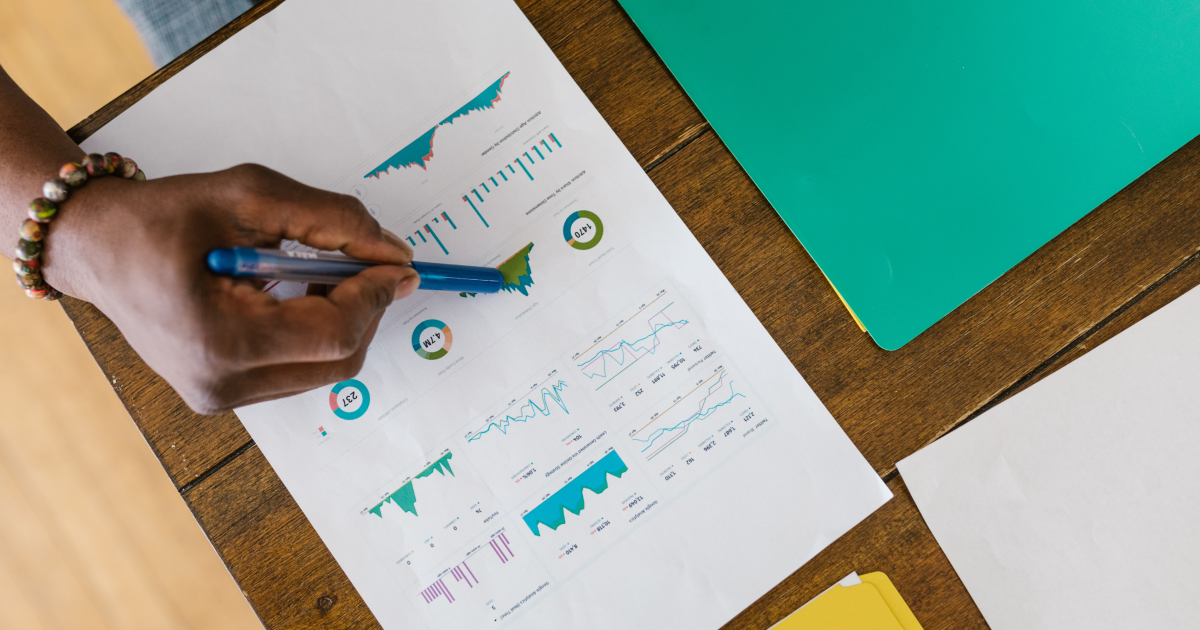
Agile & Lean principles in product discovery: driving efficient & customer-centric innovation
Jun 30
9 min read
With the ever-changing nature of industries, it has become imperative for businesses to adapt and stay competitive. Agile and Lean methodologies have revolutionized the way organizations approach product discovery and development.
These methodologies offer a powerful framework for teams to create innovative solutions that not only meet user needs but also achieve market success.
In this article, we will delve into the increasing popularity of Agile and Lean methodologies and their impact on driving effective product development.
What is product discovery?
Product discovery serves as the foundation for successful product development and management. It is a methodology that aims to understand user needs, identify problems and define the features and characteristics of a product or service. Through research, gathering insights, and validating assumptions, product discovery creates a deep understanding of the target market and its requirements.
The primary goal of product discovery is to minimize the risk of building a product that does not effectively address user needs. By employing a user-centered and data-driven approach, product teams can create products that are more likely to meet user expectations, solve real problems and achieve market success.
The product discovery process encompasses a range of key activities, including user research, market analysis, problem definition, idea generation, prototyping and testing and iterative learning.
What is agile methodology?
Agile methodology is built upon a set of principles and values that guide the development and management of projects. Agile places a strong emphasis on delivering working software or products early and frequently to gather feedback from customers and stakeholders. By doing so, teams ensure customer satisfaction and reduce the risk of building the wrong product.
The methodology breaks down projects into smaller increments known as iterations or sprints. Each iteration builds upon previous work and enables feedback and adjustment. This approach embraces change and welcomes the adaptation of requirements, even in the latter stages of development. This flexibility allows for continuous improvement and the ability to respond to changing business needs.
Effective communication and collaboration are at the core of Agile methodologies. Regular interactions, face-to-face conversations and self-organizing teams foster shared understanding and alignment among team members, customers and stakeholders. Agile empowers teams to make decisions and organize their own work, creating a sense of ownership and accountability.

What is lean methodology?
Lean principles focus on streamlining value delivery and eliminating waste in the product development process. It is an approach that promotes continuous improvement and emphasizes delivering value incrementally. Lean techniques are particularly valuable in the product discovery phase, where efficiency and waste reduction are paramount.
One of the key Lean techniques for product discovery is value stream mapping. This technique involves visualizing the entire end-to-end process of creating a product, identifying areas of waste, and streamlining the workflow. By mapping the value stream, teams can identify bottlenecks, unnecessary steps, and delays, allowing them to optimize the process and deliver value more efficiently.
Continuous improvement is another fundamental aspect of Lean methodology. It involves constantly seeking ways to enhance the product development process by eliminating waste and inefficiencies. Lean encourages teams to adopt a mindset of continuous learning, experimentation, and adaptation. By embracing a culture of improvement, teams can enhance their problem-solving capabilities and deliver higher-quality products.
Agile vs. Lean methodologies
While Agile and Lean methodologies have distinct approaches, they share many common goals and principles. Understanding the differences between Agile and Lean in the context of product discovery is essential to harness their combined power effectively.
Agile methodologies, such as Scrum and Kanban, primarily focus on delivering value through iterative and incremental development. They enable the frequent gathering of feedback, adaptation to changing circumstances, and collaboration among team members and stakeholders. Agile methodologies are particularly effective when applied to projects with evolving requirements and dynamic market conditions.
Lean methodology is centered around waste reduction and maximizing value delivery. Lean techniques, such as value stream mapping and continuous improvement, help teams identify and eliminate waste, optimize workflows, and streamline the product development process. Lean methodologies are highly valuable when applied to projects that require efficiency, cost optimization, and resource allocation.

Synergies between Agile and Lean in product discovery
While Agile and Lean methodologies have their unique strengths, they can be highly complementary when applied together in product discovery. The synergies between Agile and Lean lie in their shared focus on continuous improvement, collaboration, and delivering value to customers.
Combining Agile's iterative and incremental approach with Lean's emphasis on waste reduction and streamlining workflows allows teams to create a highly efficient and customer-centric product discovery process.
Strategies for effective Agile and Lean integration
Integrating Agile and Lean methodologies requires a thoughtful approach and careful consideration of the specific needs and characteristics of the project.
Here are some strategies for effective integration:
Start with a shared vision
Establish a clear understanding of the project's objectives, goals, and desired outcomes. Ensure that all team members and stakeholders are aligned and share a common vision for product success.
Define a hybrid process
Tailor a process that combines Agile and Lean principles to fit the specific requirements of the project. Identify the most effective Agile practices for iterative development and frequent feedback, while integrating Lean techniques to streamline workflows and eliminate waste.
Foster collaboration and cross-functional teams
Create a collaborative environment where team members from different disciplines work together to achieve a shared goal. Encourage open communication, knowledge sharing, and cross-functional collaboration to maximize the benefits of both Agile and Lean methodologies.
Continuously improve and adapt
Embrace a culture of continuous improvement and adaptation. Regularly schedule opportunities to reflect on the process, gather feedback from team members and stakeholders, and identify areas for improvement. Be open to change and iterate on the integrated Agile and Lean process to enhance its effectiveness.
Leverage digital tools
Utilize digital tools and platforms that support Agile and Lean practices. Project management software, collaborative tools, and visual boards can enhance communication, transparency, and efficiency in the product discovery process.

Benefits of iterative and incremental development
Traditional approaches to product development often follow a linear and sequential model in which requirements are defined upfront, followed by a lengthy development phase before the final product is delivered. This approach has inherent risks, such as building a product that does not meet user needs or changing market dynamics rendering the product irrelevant by the time it is launched.
Iterative and incremental development, on the other hand, offers a more flexible and responsive approach to discovering and delivering value. This approach involves breaking down the development process into smaller iterations, or sprints, where features and functionality are delivered incrementally. Each iteration allows for feedback, validation, and course correction, resulting in a product that better aligns with user needs and market dynamics.
There are many benefits associated with adopting iterative and incremental development processes. Some of the advantages of iterative and incremental development include:
Continuous feedback and validation
One of the primary benefits of iterative and incremental development is the ability to gather continuous feedback and validation from stakeholders and users throughout the development process.
By delivering working software or product increments early and frequently, teams can obtain valuable insights and make necessary adjustments in real-time. Early feedback enables teams to validate assumptions, identify potential issues, and refine the product based on user input. This iterative feedback loop minimizes the risk of building the wrong product and increases the chances of achieving product-market fit.
Iterative prototyping and validation
Iterative and incremental development allows for the creation of prototypes and their subsequent validation in each iteration. Prototypes serve as tangible representations of the product's features and functionality, enabling stakeholders and users to provide feedback based on real-world interactions. This iterative prototyping process enables teams to refine the product's design, user experience, and usability, ensuring that the final product meets the desired standards.
Course correction and mitigating risks
By adopting an iterative and incremental approach, teams have the opportunity to course-correct and mitigate risks early in the development process. If a particular feature or functionality does not meet expectations or align with user needs, it can be adjusted or even removed in subsequent iterations. This flexibility allows teams to respond to changing requirements, market conditions, or user feedback, reducing the risk of building a product that does not deliver value.
Enhancing product-market fit
Iterative and incremental development increases the chances of achieving product-market fit. By involving stakeholders and users in the feedback loop, teams can ensure that the product aligns with market demands and user expectations. The iterative nature of the process allows for continuous refinement and adjustment, increasing the product's competitiveness and ability to meet the needs of the target market.
Faster time to value
One of the significant advantages of iterative and incremental development is the ability to deliver value quickly. By breaking down the development process into smaller increments, teams can release functional product increments in shorter cycles. This rapid iteration and release cycle allows stakeholders and users to start realizing value sooner and provide feedback early in the process. Frequent releases enable teams to gather valuable metrics and user data, which can inform subsequent iterations and enhance the overall product quality.
Speeding up time-to-market
Iterative and incremental development can significantly shorten the time-to-market for a product. By delivering functional increments early and frequently, teams can seize market opportunities and gain a competitive advantage. Rapid iterations and continuous delivery allow for timely adjustments and responsiveness to evolving market conditions, ensuring that the product reaches the market when it is most relevant.
Maximizing ROI
By delivering value incrementally and continuously, iterative and incremental development maximizes the return on investment (ROI) for a product. Each iteration builds upon the previous work, incrementally adding value and reducing the risk of investing in features that may not be required. This approach allows stakeholders to realize a return on their investment earlier in the development process and make informed decisions based on real-world feedback and data.
Adaptability and flexibility
One of the significant advantages of iterative and incremental development is its ability to respond effectively to changing requirements. In traditional development approaches, requirements are often defined upfront, and any changes later in the process can be time-consuming and costly.
Iterative and incremental development embraces change as an essential part of the process. By allowing for flexibility and adapting to evolving user needs and market dynamics, teams can quickly respond to new information and adjust their course accordingly. This adaptability mitigates the risks associated with changing requirements and ensures that the final product is well-aligned with the ever-evolving needs of the target market.
Each iteration provides an opportunity to incorporate new requirements, adjust priorities, and respond to emerging market needs. This adaptability ensures that the product remains relevant and aligned with the evolving business landscape.
Embracing evolving user needs
User needs and preferences can evolve throughout the development process. Iterative and incremental development embraces this reality by involving users in the feedback loop from the early stages.
By continuously gathering user feedback and incorporating it into subsequent iterations, teams can ensure that the product meets the ever-changing needs and expectations of its users. This user-centric approach increases the likelihood of creating a product that resonates with the target audience and delivers a positive user experience.
Final thoughts
Staying up to date on trends and adopting lean and agile methodologies into the development process offers numerous benefits for discovering and delivering value in product development.
By embracing an iterative feedback loop, course correction, and rapid delivery of functional increments, teams can validate assumptions, incorporate feedback, mitigate risks, and maximize the return on investment.
This approach fosters adaptability, responsiveness, and a user-centric mindset, increasing the chances of creating successful products that meet user needs, achieve market success, and drive business growth.
At Twenty Ideas, we are committed to assisting businesses in gaining valuable insights into customer needs, validating market demand, and creating successful products that make a lasting impact. With our expertise and experience, we can guide you through every step of the product discovery journey, ensuring that you achieve your goals and deliver exceptional results.
Steve Ransom
In an organization renowned for astute insights, Senior Product Manager Steve Ransom specializes in unconventional ideas and lobs them from way outside the box in deep left field. He’s an annoyingly persistent advocate for continuous discovery, rapid prototyping, and frequent customer interviews. A Certified Scrummaster, his specialties include outcome and product curation, creative direction, writing, editing, marketing, publishing, and data analysis.
by this author





